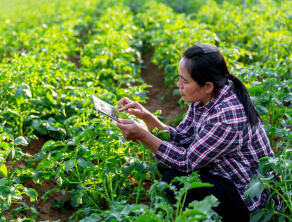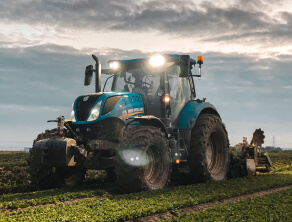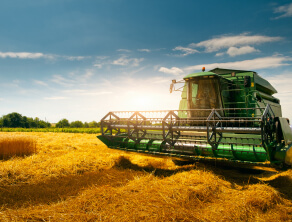All You Need to Know about Urban Farming.

Introduction:
In recent years, as our world faces increasing challenges related to food security, environmental sustainability, and rapid urbanization, a transformative trend has emerged that holds the promise of addressing these pressing issues: Urban Farming.
From rooftops adorned with lush greenery to abandoned warehouses transformed into thriving agricultural hubs, urban farming has become a beacon of hope for sustainable food production in cities across the globe.
This innovative practice reconnects urban dwellers with nature and presents many benefits, from reduced carbon footprints to improved community health and empowerment.
In this comprehensive article, we will delve into all you need to know about urban farming – its principles, methods, benefits, and the exciting potential it holds for shaping the future of agriculture and urban living.
Definition of Urban Farming: Urban farming refers to cultivating, producing, and harvesting food and other agricultural products within a city’s or urban environment’s confines. It uses various spaces such as rooftops, balconies, vacant lots, community gardens, and indoor settings to grow crops and raise animals.
The primary objectives of urban farming include increasing local food production, promoting sustainability, reducing the carbon footprint of food distribution, and fostering community engagement with agriculture. Urban farming plays a crucial role in enhancing food security, improving access to fresh produce, and connecting urban dwellers with the process of food production.
Definition of Urban Agriculture: Urban agriculture encompasses a broader spectrum of agricultural activities within urban settings beyond just food production. It includes urban farming and practices such as horticulture, beekeeping, aquaculture, composting, and agroforestry within the urban landscape.
Urban agriculture involves the integration of agriculture into the fabric of the city, incorporating green spaces, parks, public areas, and private properties for agricultural purposes. Besides its significance in enhancing food security and local food production, urban agriculture contributes to environmental sustainability, biodiversity conservation, waste recycling, and promoting ecological balance in urban areas. This multifaceted approach to agriculture in cities fosters a more resilient and self-reliant urban community, creating opportunities for social interaction, education, and a deeper connection with nature.

Importance of Urban Farming in Modern Society
- Enhancing Food Security
- Utilization of Underutilized Spaces
- Community Engagement and Empowerment
- Supporting Subsistence Farming
The Connection between Urban Farming and Subsistence Farming
Urban and subsistence farming are two distinct forms of agricultural practices, yet they share some connections and can benefit from each other.
Resource Utilization: Urban and subsistence farming focus on optimizing resource utilization. In urban farming, space is limited, so efficient use of available land is crucial. Techniques like vertical, container, and hydroponics maximize crop yields in small areas.
Similarly, subsistence farming relies on making the most of available resources, often practiced on small plots of land and using traditional methods passed down through generations.
Food Security: Urban and subsistence farming contribute to food security in their respective contexts. Urban farming addresses food security in densely populated areas by bringing fresh produce closer to the urban population, reducing the reliance on long-distance transportation of food. Subsistence farming, on the other hand, provides food directly to farming families, helping them meet their basic nutritional needs.
Environmental Benefits: Both types of farming can offer environmental benefits. Urban agriculture can reduce carbon footprint by lowering transportation distances, decreasing the need for refrigeration, and promoting green spaces within cities.
Subsistence farming, when practiced sustainably, often involves traditional methods that prioritize environmental stewardship, such as crop rotation, natural pest control, and minimal use of chemical inputs.
Community Engagement: Urban farming and subsistence farming can foster community engagement. Community gardens and rooftop farms can unite people, create social connections, and educate urban dwellers about agriculture and food production in urban areas. Similarly, subsistence farming is often a communal activity in rural areas, where community members help each other during planting and harvesting seasons.
Adaptability and Resilience: Both types of farming require adaptability and resilience. Urban farmers must be innovative in using limited space and dealing with urban challenges like pollution and limited access to water.
Subsistence farmers often face unpredictable weather patterns and market fluctuations, which require them to be resourceful and resilient in their agricultural practices.
Knowledge Sharing: While urban farming and subsistence farming may operate in different settings, there is potential for knowledge sharing between the two.
Urban farming practices, such as vertical farming and aquaponics, can be adopted or adapted in small-scale subsistence farming to enhance efficiency. Conversely, traditional farming techniques and subsistence farmers’ knowledge can inspire sustainable urban agriculture practices.
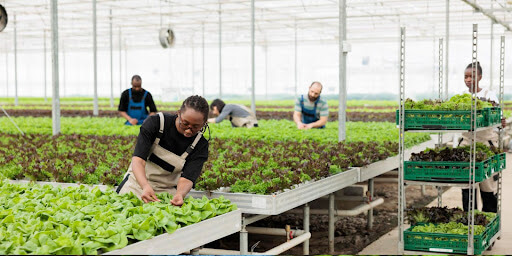
Understanding Urban Farming
Urban farming and urban agriculture represent innovative and sustainable approaches to food production within urban environments. With the increasing global population and rapid urbanization, these practices have gained significant attention as viable solutions to address food security and environmental challenges and promote self-sufficiency.
The scope of urban farming is multifaceted and encompasses various aspects:
- Sustainable Food Production: Urban farming aims to produce fresh, nutritious, locally grown food within city limits. Urban farmers maximize available space to develop diverse crops and raise livestock by utilizing vertical farming, hydroponics, aquaponics, rooftop, and community gardens.
- Community Engagement: Urban farming fosters community involvement, bringing together residents, schools, local organizations, and businesses. These initiatives create a sense of community ownership and encourage knowledge exchange, skill-building, and social cohesion.
- Food Security: By reducing the dependency on external food sources, urban farming enhances food security, especially in areas with limited access to fresh produce. It mitigates the risk of food shortages and price fluctuations caused by transportation and distribution challenges.
- Environmental Benefits: Urban agriculture promotes sustainability by reducing the carbon footprint associated with long-distance food transportation. Converting underutilized urban spaces into green areas improves air quality, enhances biodiversity, and reduces the urban heat island effect.
- Economic Opportunities: Urban farming can offer financial benefits by generating income by selling surplus produce and creating job opportunities within the local community, including agriculture, distribution, and marketing.
- Resource Efficiency: Employing advanced technologies, urban farmers optimize resource use, including water, energy, and land, leading to reduced waste and increased productivity.
- Education and Research: Urban farming acts as a living laboratory for exploring innovative agricultural techniques, contributing to ongoing research on sustainable practices, crop varieties suitable for urban environments, and the potential for controlled environment agriculture.
- Subsistence Farming in Urban Contexts: For low-income communities, urban farming is a form of subsistence agriculture, providing direct access to affordable, fresh produce and empowering individuals and families to meet their basic nutritional needs.
Historical Background and Evolution of Urban Agriculture
Urban agriculture, also known as urban farming, is cultivating, processing, and distributing food within urban areas. It has a long and diverse history, with roots dating back to ancient civilizations. The evolution of urban agriculture can be understood through the lens of subsistence farming, which has played a significant role in sustaining urban populations throughout history.
Ancient and Medieval Times: Urban agriculture traces its origins to ancient civilizations such as Mesopotamia, Egypt, and the Indus Valley, where city-dwellers practiced subsistence farming to meet their food needs. These early urban centers developed innovative irrigation systems and employed rooftop gardens and small plots of land to grow crops. Agriculture was essential for city survival, providing a reliable food source close to the urban settlements.
During the Middle Ages, European cities also practiced urban farming. Monasteries and castle gardens were common, providing sustenance to their inhabitants. In Asian cities, rooftop gardens and small-scale agriculture in courtyards were prevalent.
Renaissance and Industrial Revolution: With the Renaissance, urban agriculture declined in Europe as large-scale agriculture in rural areas became more dominant. The Industrial Revolution further accelerated this shift, drawing people from rural areas to urban centers for industrial work. As a result, the focus on urban agriculture diminished as cities depended more on rural areas for food supplies.
20th Century and Rise of Urban Farming: The 20th century witnessed a resurgence of urban agriculture, particularly during times of crisis like World War I and II. In response to food shortages, urban residents in various countries established “Victory Gardens” to grow their fruits and vegetables. These initiatives helped alleviate food scarcity and promoted community engagement and patriotism.
The Green Revolution and Beyond: In the mid-20th century, the Green Revolution brought significant advancements in agricultural technology, increasing global food production. However, it also led to more substantial industrialization and a disconnect between food production and consumption. As concerns about environmental sustainability and food security grew, so did the interest in urban agriculture.
Contemporary Urban Agriculture: In recent decades, urban agriculture has been revitalized due to various factors, including increasing urbanization, concerns about food miles and carbon footprints, the desire for fresher and healthier produce, and a stronger emphasis on community resilience. Urban farming takes various forms, including community gardens, rooftop gardens, vertical farming, hydroponics, and aquaponics.
Cities worldwide have recognized the potential of urban agriculture to enhance food security, promote social cohesion, and contribute to sustainable development. Governments, non-profit organizations, and individuals actively support and invest in urban farming initiatives, advocate for better land-use policies, and integrate agriculture into urban planning.
Fundamental Principles and Approaches of Urban Farming
- Sustainable Land Use
- Vertical Farming
- Diversification of Crops
- Conservation of Resources
- Integration of Technology
- Community Involvement
- Education and Training
- Waste Management
- Biodiversity and Pollinator Support
- Local Food Access and Food Security
Approaches:
- Vertical Farming: A cutting-edge approach optimized for urban farming, utilizing vertical space efficiently.
- Community-Based Urban Agriculture: A community-driven approach to urban farming that fosters social engagement and shared responsibilities.
- Sustainable Subsistence Farming: Emphasizing sustainable practices in urban agriculture for subsistence purposes.
- Technology-Enhanced Urban Farming: Integrating modern technologies to optimize urban farming productivity.
- Biodiversity and Pollinator Support in Urban Agriculture: Promoting biodiversity and pollinator-friendly practices for urban farming systems.
- Waste-to-Nutrient Urban Farming: Utilizing organic waste for nutrient-rich soil amendments in urban agriculture.
- Food Security through Urban Farming: Addressing food security challenges through local food production in urban areas.
- Diverse Crops in Urban Agriculture: Emphasizing the importance of growing various crops in urban farming systems.
- Efficient Resource Use in Urban Farming: Optimizing resource utilization in urban agriculture, including water and energy.
- Education and Training in Urban Farming: Providing educational opportunities to empower urban farmers with essential skills and knowledge.
Role of Technology in Advancing Urban Farming
How is technology advancing urban farming?
There are several ways that technology is being used to advance urban farming. Some of the most common technologies include:
- Vertical farming: Vertical farming is urban farming that grows crops in vertically stacked layers. This allows farmers to produce more food in a smaller space, which is ideal for urban areas. Vertical farms can be located in various places, such as warehouses, office buildings, and parking garages.
- Hydroponics and aquaponics: Hydroponics raises plants without soil using nutrient-rich water. Aquaponics is a type of hydroponics that combines fish farming with plant cultivation. Both hydroponics and aquaponics can be used in urban areas, as they require very little space and water.
- Intelligent sensors: Smart sensors monitor and control various aspects of urban farming, such as temperature, humidity, and nutrient levels.
- Automated irrigation systems: Automated irrigation systems are used to deliver water to plants regularly to save time and labor for farmers, and they can also help to conserve water.
- Data analytics: Data analytics collects and analyzes data about urban farming operations to identify trends, make predictions, and improve decision-making.
Benefits of using technology in urban farming
There are many benefits to using technology in urban farming. Some of the most important benefits include:
- Increased productivity: Technology can help farmers produce more food in a smaller space, which is essential in urban areas where land is scarce.
- Improved efficiency: Technology can help farmers automate tasks, saving time and labor to lower costs and higher profits.
- Increased sustainability: Technology can help farmers conserve water and other resources essential in an urban environment.
- Improved food security: Urban farming can help to increase food security in cities by providing a source of fresh, local produce.
Advantages of Urban Farming
- Promoting Food Security in Urban Areas
- Mitigating Environmental Impact and Climate Change
- Fostering Community Engagement and Social Cohesion
- Enhancing the Health and Well-being of Urban Dwellers

Types of Urban Farming
Rooftop Farming: Rooftop farming involves cultivating plants and vegetables on the rooftops of buildings in urban areas. Urban farming utilizes available rooftop spaces to create green places, reduce urban heat islands, and produce fresh produce in cities.
Vertical Farming: Crops can be grown vertically by stacking them on one another or vertically inclined surfaces, like tall buildings or specialized constructions. This method makes the best available space and frequently uses hydroponic or aeroponic systems to feed and irrigate the plants.
Community Gardens: Community gardens are shared plots of land where individuals or groups of people cultivate crops collectively. These gardens promote community engagement, provide access to fresh produce, and encourage sustainable agricultural practices.
Aquaponics: Aquaponics is a symbiotic system that combines aquaculture (raising fish) and hydroponics (growing plants in water). A sustainable and effective farming technique in urban environments is created when the fish waste fertilizes the plants, and the plants help filter and clean the water for the fish.
Hydroponics: Hydroponics is a soilless farming technique where plants are grown in nutrient-rich water solutions. The absence of soil reduces the need for vast land areas, making it suitable for urban environments with limited space.
Aeroponics: Like hydroponics, aeroponics is a soilless method that involves growing plants in an air or mist environment with nutrient-rich solutions. This technology allows for higher crop yields and water efficiency, making it ideal for urban farming.
Indoor Farming: Indoor farming involves growing crops in controlled environments such as warehouses, shipping containers, or vertical farms with artificial lighting and climate control. This method allows year-round production and minimizes the impact of external weather conditions.
Edible Landscaping: Edible landscaping combines ornamental plants and edible crops in public spaces, residential areas, or parks. It enhances the aesthetics of urban areas while also providing a source of fresh, locally grown food.
Mobile Farms: Mobile farms are movable agricultural setups, often based on trailers or vehicles, that can be transported to various urban locations. These farms offer flexibility and accessibility to different communities needing fresh produce.
Permaculture Gardens: Permaculture focuses on creating sustainable ecosystems where plants, animals, and humans harmoniously coexist. In urban settings, permaculture gardens can be designed to maximize productivity while minimizing waste and environmental impact.
Integrating Urban Farming with Subsistence Agriculture
Urban farming and subsistence agriculture are two essential practices that play crucial roles in ensuring food security and sustainability. While urban farming focuses on cultivating crops and raising livestock in urban areas, subsistence agriculture aims to meet the basic food needs of rural communities.
The world has witnessed a rapid urbanization trend in recent years, leading to an increasing number of people residing in urban centers. This shift has put significant pressure on the urban food supply chain, making it vital to explore innovative ways to integrate urban farming with subsistence agriculture to address food security challenges.
- The Need for Integrating Urban Farming with Subsistence Agriculture:
(a) Urban Food Security:
Food security has become a pressing concern with the increasing urban population. Integrating urban farming with subsistence agriculture can help bridge the gap between urban food demand and supply. It allows urban dwellers to access fresh, locally grown produce while reducing the burden on the transportation and distribution of food from distant rural areas.
(b) Sustainable Resource Management:
Integrating both practices promotes sustainable resource management. Urban farming often incorporates eco-friendly methods, such as composting, rainwater harvesting, and organic farming, which can also be applied to subsistence agriculture in rural settings. This convergence can lead to reduced waste generation, efficient water usage, and improved soil health.
(c) Rural-Urban Linkages:
Integrating urban farming with subsistence agriculture fosters stronger linkages between rural and urban communities. This synergy can lead to knowledge sharing, the exchange of agricultural practices, and the establishment of mutually beneficial economic relationships.
Case Studies of Successful Integration in Developing and Developed Nations
Developing Nations
- Kampong Glam, Singapore: This historic neighborhood in Singapore has been transformed into a vibrant community with a thriving urban farming scene. Residents grow various crops on rooftops, balconies, and vacant lots. The community garden, called the “Green Oasis,” is a popular spot for people to meet and socialize.
- Lambeth, London: This borough in London has a long history of urban farming. Today, Lambeth has over 100 community gardens and allotments, providing residents with fresh food and helping improve the environment. The Lambeth Food Partnership, a non-profit organization, works to support and promote urban farming in the borough.
- Nairobi, Kenya: The Kibera slum in Nairobi is home to over 1 million people. Despite its poverty, Kibera is also home to a thriving urban farming community. Residents grow crops on rooftops, backyards, and vacant lots. Urban farming provides a source of food and income for residents, and it also helps to improve the environment by reducing pollution and providing a green space for people to relax and socialize.
Developed Nations
- Detroit, Michigan: The city of Detroit has a long history of urban farming. In recent years, there has been a resurgence of urban agriculture in Detroit, as residents have turned to it to improve their food security and connect with their community. Detroit has over 1,000 community gardens and urban farms, providing residents fresh food and helping revitalize the city.
- New York City, New York: New York City has a thriving urban farming scene. There are over 500 community gardens and urban farms in the city, providing fresh food for residents and helping to improve the environment.
The New York City Department of Parks and Recreation supports urban farming through its GreenThumb program, which provides technical assistance and resources to community gardens and urban farms.
- Portland, Oregon: Portland is known for its sustainability and environmental protection commitment. The city has a robust urban farming community, with over 100 community gardens and urban farms. Urban farming provides a source of fresh food for residents, and it also helps to reduce pollution and improve air quality.
As the world’s population grows, urban farming is becoming increasingly important. It is a sustainable way to produce food and provide for the needs of a growing population.
Here are some additional data points about the benefits of urban farming:
- A study by the University of British Columbia found that urban agriculture can provide up to 15% of a city’s food needs.
- Research by the UN Food and Agriculture Organization found that urban agriculture can create up to 10 million jobs in developing countries by 2030.
- A study by the University of California, Berkeley found that urban farming can reduce air pollution by up to 20%.
- A study by the University of Arizona found that urban farming can improve water quality by up to 30%.
Challenges and Solutions in Urban Farming
Challenges
- Land scarcity: Urban areas are typically densely populated, with limited agricultural space, making finding land suitable for farming difficult and increasing land costs.
- Proximity to pollution: Urban areas are often polluted, which can challenge urban farmers. Pollutants in the air, water, and soil can make it challenging to grow healthy crops.
- Water scarcity: Urban areas are also often water-scarce, making it difficult to irrigate crops, and can challenge urban farmers to grow crops in containers or raised beds.
- Skills and knowledge: Urban farmers may need to gain the skills and knowledge necessary to farm successfully. This can be a challenge for both individual farmers and community-based urban agriculture projects.
- Regulations: Urban farmers may need to comply with various laws, which can be time-consuming and expensive.
Solutions
- Vertical farming: Vertical farming is a type of urban agriculture that uses stacked layers of plants to grow food in a vertical space. This can solve the land scarcity challenge, allowing farmers to grow crops in a small footprint.
- Hydroponics and aquaponics: Hydroponics and aquaponics are plant growth methods without soil. These methods can be used to grow crops in a controlled environment, which can help reduce pollution’s impact on yields.
- Community-supported agriculture (CSAs): CSAs are subscription services that allow people to purchase shares of a farm’s produce. This can support urban farmers and provide fresh, local food to consumers.
- Urban agriculture education: Offering education and training programs can help increase urban farmers’ skills and knowledge, leading to more successful urban agriculture projects.
- Government support: Government support can reduce the regulatory burden on urban farmers and make it easier for them to succeed, including providing financial assistance, technical assistance, and land for urban agriculture projects.
Urban Farming Initiatives and Success Stories
- Sky Greens, Singapore
Sky Greens is the world’s first low-carbon hydraulic water-driven urban vertical farm. It reduces the amount of energy and land needed for traditional farming techniques. The farm is in a greenhouse with three stories of vertical systems. Each system can produce five to ten times more per unit area than conventional farms.
- Horta de Manguinhos, Brazil
The Horta de Manguinhos project is a Rio de Janeiro, Brazil, community farm. It is Latin America’s largest community farm and helps to provide food security for 800 families. The farm also employs more than 20 local workers.
- Distributed Urban Farming Initiative (DUFi), Texas
The DUFi project transforms vacant lots in Bryan, Texas, into urban gardens. The project aims to educate and inspire residents about healthy eating, entrepreneurship, and tourism. The DUFi project has grown broccoli, cauliflower, cabbage, and lettuce in raised beds and pallet gardens.
- Fresh & Local, Mumbai
A group called Fresh & Local uses urban agriculture to enhance the health and happiness of Mumbai people. The group turns vacant lands into farms where the local population can produce food. More than 100 urban farms have been established in Mumbai thanks to Fresh & Local.
- Anjali Waman, India
Anjali Waman is a farmer from Kalwadi village in Pune, India. She has increased her income by 500% by using urban farming techniques and grows papaya and banana on her five-acre plot of land. She also grows vegetables in her backyard nutrition garden.
Tips for Starting an Urban Farm
- Identifying Suitable Locations and Resources
- Choosing the Right Crops and Livestock
- Implementing Sustainable Farming Practices
- Engaging the Community and Establishing Partnerships
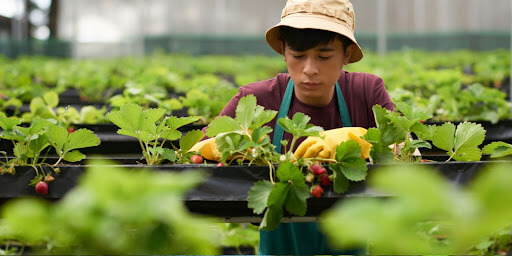
Future Prospects and Innovations in Urban Farming
As urbanization continues to expand, urban farming and agriculture are set to play a pivotal role in addressing food security, sustainability, and resilience in our rapidly growing cities. Embracing the potential of urban farming offers exciting prospects and opportunities for a more interconnected and sustainable future.
One of the critical prospects of urban farming lies in its ability to bring fresh, locally grown produce closer to the urban population.
Urban farmers can optimize limited space and resources by utilizing innovative techniques such as vertical farming, hydroponics, and aquaponics, producing high yields in controlled environments. This not only reduces the dependence on distant agricultural sources but also minimizes transportation-related carbon emissions.
Moreover, advancements in innovative agriculture technologies and the integration of artificial intelligence are set to revolutionize urban farming. Automation and data-driven insights can streamline farming processes, optimizing resource usage and increasing productivity. These technologies can facilitate precise monitoring of crops, water, and nutrient levels, reducing waste and improving crop quality.
Innovations in sustainable energy solutions can also contribute significantly to the growth of urban farming.
Another critical aspect of the future of urban farming is the emphasis on circular economy practices. Integrating urban agriculture with other urban systems, such as waste management and renewable energy generation, can create a closed-loop system where waste becomes a resource for agricultural inputs.
Furthermore, the rise of community-supported agriculture (CSA) and farm-to-table initiatives empower local communities to participate in urban farming actively.
By fostering a deeper connection between consumers and producers, these initiatives promote healthy eating habits, support local economies, and cut down the carbon footprint associated with food distribution.
Addressing the challenges and opportunities associated with subsistence farming is essential as urban farming gains momentum. Leveraging urban farming techniques for subsistence agriculture can offer vulnerable communities greater access to nutritious food and economic opportunities.
By providing training, resources, and support to subsistence farmers in urban areas, we can empower them to cultivate their land and enhance food security for their families and communities.
In conclusion, urban farming and agriculture are promising pathways toward a sustainable and resilient future. The convergence of innovative technologies, renewable energy solutions, circular economy practices, and community engagement holds the key to unlocking the full potential of urban farming.
By prioritizing these developments, we can establish a more food-secure and environmentally conscious urban landscape, transforming cities into thriving hubs of sustainable agriculture and ensuring a healthier future for future generations.
![Blog-[x]cube LABS](https://d6fiz9tmzg8gn.cloudfront.net/wp-content/uploads/2016/06/blog_banner.jpg)


